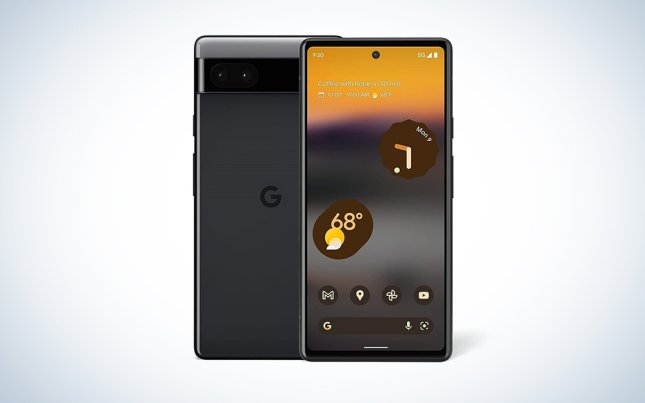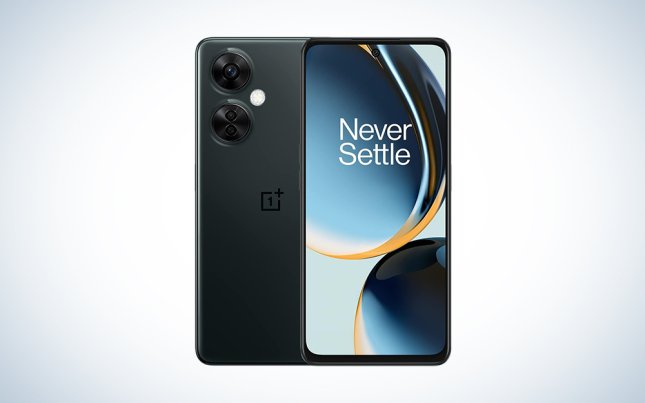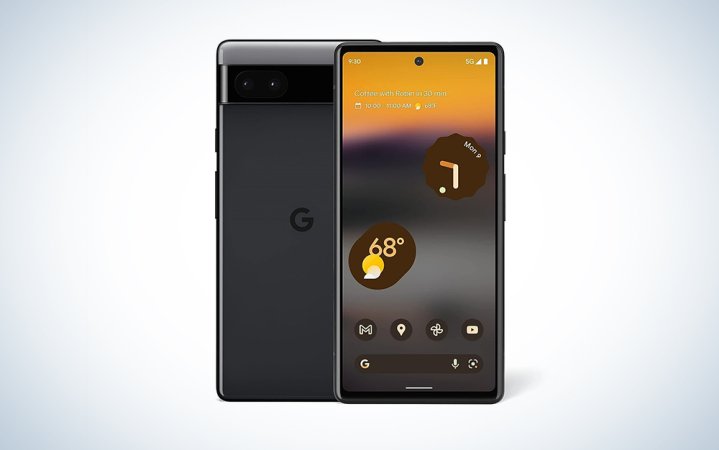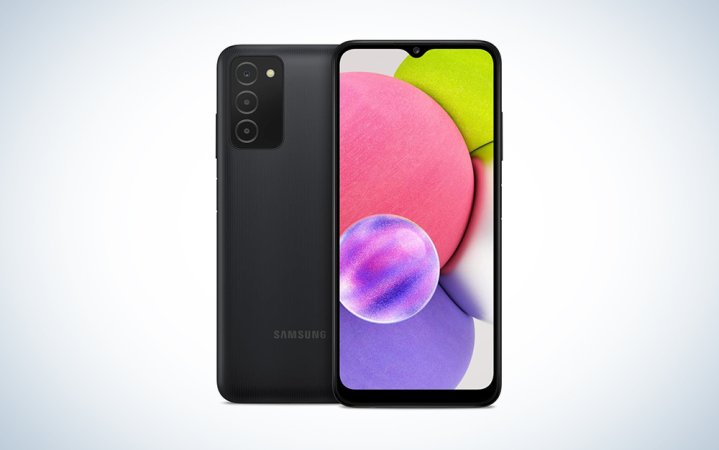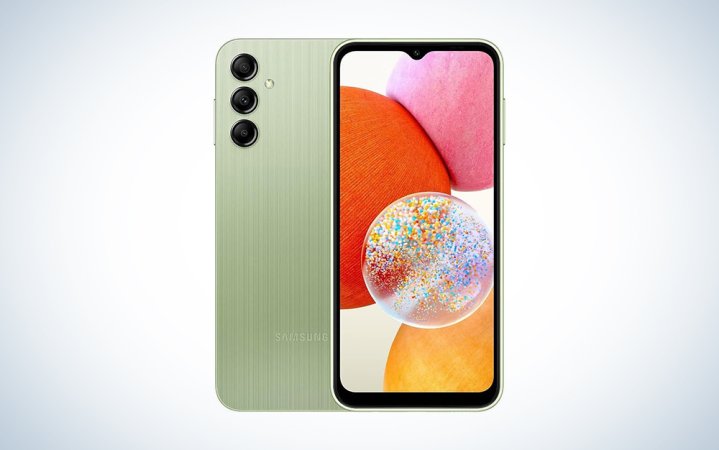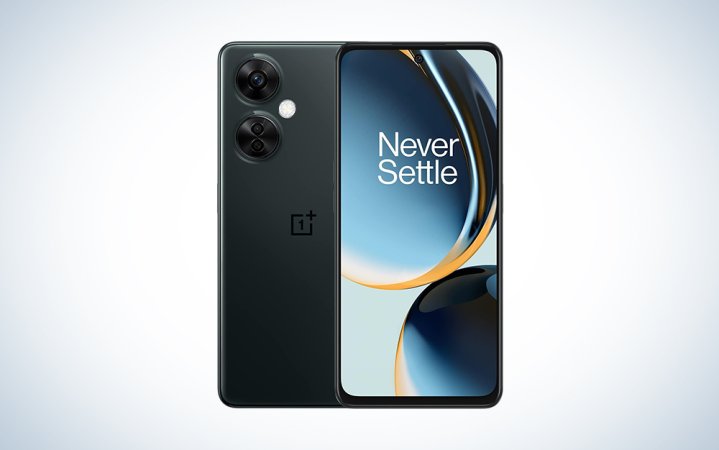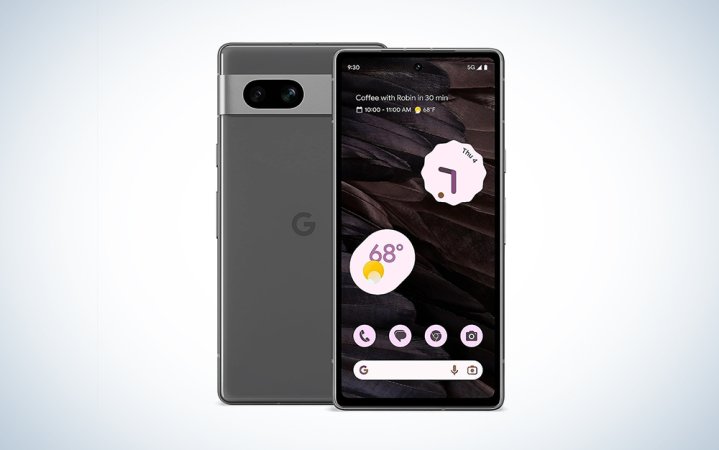We may earn revenue from the products available on this page and participate in affiliate programs. Learn more ›
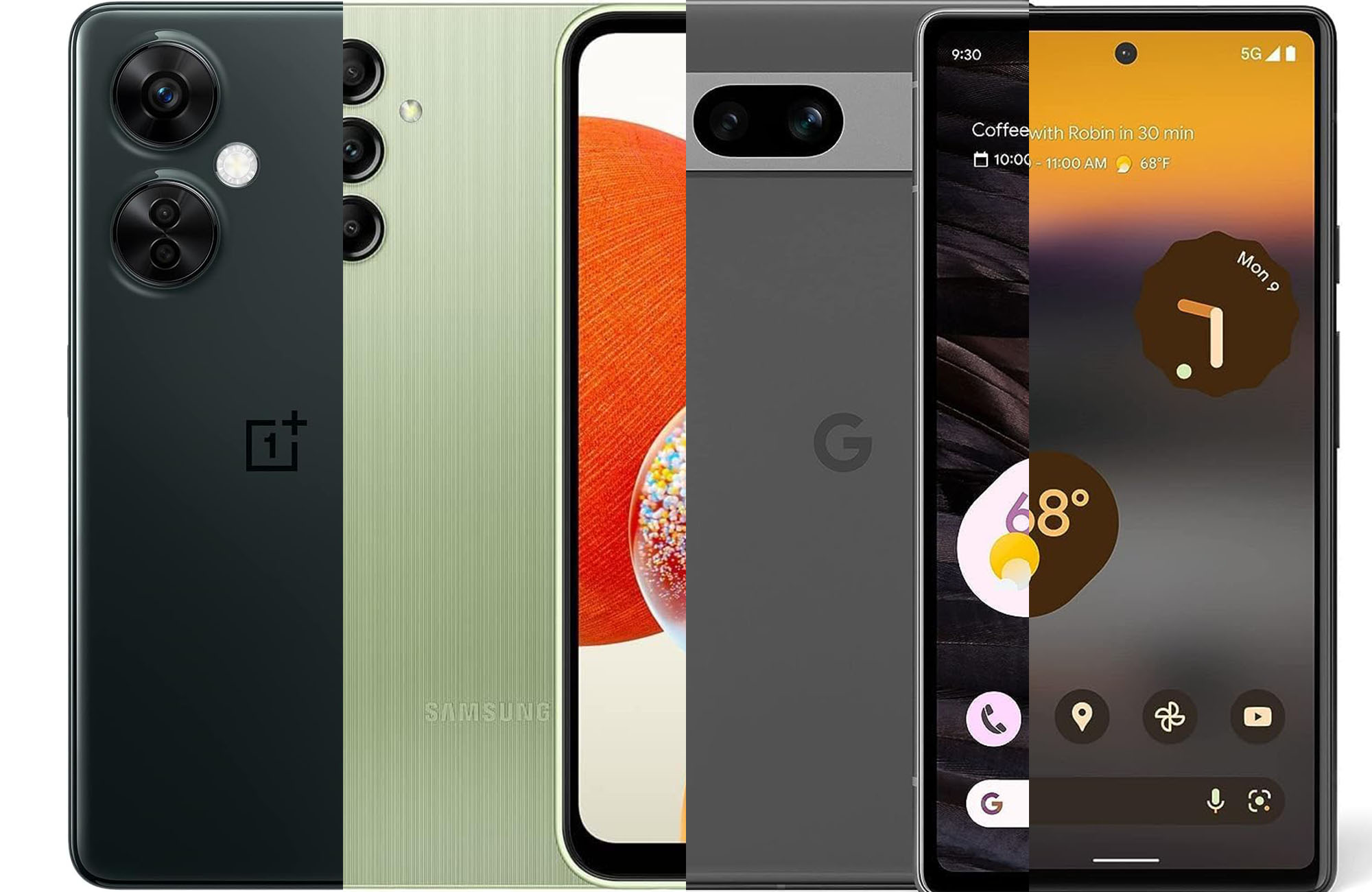
With foldable designs, wireless charging, and high-resolution displays, the allure of owning the latest Android phone is undeniable. However, it’s important to realize that you don’t need the newest model to play games, make video calls, or download the best apps—budget-friendly options are available for a fraction of the price. You can find an excellent mid-range Android phone that offers similar performance, long-lasting battery life, and software support to premium models for as little as $200. Our guide can help you sort through all the best cheap Android phones that offer a flagship-level experience.
- Best overall: Google Pixel 6a
- Best budget: Samsung Galaxy A03s
- Best value: Samsung Galaxy A14 5G
- Best for gaming: OnePlus Nord N30 5G
- Best camera: Google Pixel 7a
How we chose the best cheap Android phones
For over a decade, I’ve written about smartphones for sites like Popular Science, Best Products, and Reviewed. During that time, I’ve reviewed dozens of Android devices, from affordable mid-range phones to high-end premium models. To select our picks, I drew on my experience using Android phones, consulted trusted sources and professional reviewers, and researched the most popular models available. While I enjoy using the newest smartphones available, I’ve come to prefer budget devices because they offer the features I want at a much more affordable price.
What is considered affordable?
The Android phone market is flooded with options, making it difficult to pinpoint how much you need to spend on a quality device. While it’s possible to find a serviceable Android device for $100 or less, the sweet spot for striking a balance between affordability, performance, and features tends to be in the $200 to $350 price range. Our carefully selected picks offer the perfect blend of cost-effectiveness, ensuring you get the most out of your investment without compromising on the performance and features that matter most in the ever-evolving world of smartphones.
The best cheap Android phones: Reviews & Recommendations
While more affordable Android phones may lack premium features like high refresh rate displays and wireless charging, they still offer excellent performance and years of software support. But balancing cost with essential features can be tricky, so we’ll help you suss out what’s worth checking out and what isn’t. Our list of the best cheap Android phones will help you find the model that delivers a flagship-level experience in a more affordable package.
Best overall: Google Pixel 6a
Best overall
Google Pixel 6a
Pros
- Fantastic display
- Flagship-level camera
- Excellent software support
Cons
- Fingerprint sensor can be slow
Specs
- Display: 6.1-inch, 1080 x 2400, OLED, 60Hz, 429 ppi
- Processor: Google Tensor Titan M2
- RAM: 6GB
- Camera: 12MP f/1.7, OIS; 12MP f/2.2
- Support: Five years of security updates. Google hasn’t said how many OS updates it will receive, but the Pixel 6 has been promised three.
Despite its age, the Google Pixel 6a provides the best balance between performance and affordability. The device features a powerful Tensor chip, a custom piece of silicon designed by Google. The processor enables advanced AI and machine learning features, providing users with an unmatched camera experience in this price range. The device features a dual camera setup with a 12MP primary camera and a 12MP ultra-wide camera. The Pixel 6a also features a vibrant 6.1-inch OLED display, 6GB of RAM, and a 4,410mAh battery that Google estimates can last all day, depending on your usage.
Best budget: Samsung Galaxy A03s
Best budget
Samsung Galaxy A03s
Pros
- Very affordable
- Excellent software support
- Fantastic battery life
Cons
- Camera quality is so-so
Specs
- Display: 6.5-inch, 720 x 1600, LCD, 270 ppi
- Processor: MediaTek Helio P35
- RAM: 3GB
- Camera: 13MP f/2.2 (wide), 2MP f/2.4 (macro), 2MP f/2.4 (depth)
- Support: Security updates into 2026
The Samsung Galaxy A03s provides a mix of mid-range and low-end features, resulting in a device that perfectly fits in the category of “best budget.” It delivers decent enough performance, good software, and excellent support from Samsung, making it the best Android device if you need to save money. It features a 6.5-inch 720p LCD display, a MediaTek Helio G35 processor, and 3GB of RAM—enough to watch videos and play less-intensive games. The device also offers a fingerprint sensor in the power button and a 13MP camera that we would describe as fine.
Best value: Samsung Galaxy A14 5G
Best value
Samsung Galaxy A14 5G
Pros
- Big, high-resolution display
- Expandable storage
- Works on all U.S. carriers
Cons
- No IP rating
Specs
- Display: 6.6-inch, 1080 x 2048, LCD, 400 ppi
- Processor: MediaTek Dimensity 700
- RAM: 4GB
- Camera: 50MP f/1.8 (wide), 2MP f/2.4 (macro), 2MP f/2.4 (depth)
- Support: Security updates into 2027
With a 6.6-inch 1080p display, MediaTek Dimensity 700 chip, and 5,000mAh battery, Samsung’s A14 5G is a solid option for around $200. The device features a sturdy design that looks like it belongs in the Galaxy S23 family. Meanwhile, it offers 4GB of RAM and 64GB of storage with a microSD card slot for expansion—something that’s becoming rare these days. It has a 50MP primary camera, which takes decent pictures and can work on all U.S. carriers, including Verizon. Samsung is also promising security patches until early 2027, ensuring the device stays protected from malware for several more years.
Best for gaming: OnePlus Nord N30 5G
Best for gaming
OnePlus Nord N30 5G
Pros
- 120Hz display
- Excellent performance
- 50W wired charging
Cons
- No IP rating
Specs
- Display: 6.7-inch, 1080 x 2048, LCD, 120Hz, 391 ppi
- Processor: Qualcomm Snapdragon 695
- RAM: 8GB
- Camera: 108MP f/1.7 (wide), 2MP f/2.4 (macro), 2MP f/2.4 (depth)
- Support: One Android version upgrade and three years of security updates
The OnePlus Nord N30 5G is a new addition to the market and a device that offers high-end specs in an affordable package. The device features a 6.7-inch 1080p LCD display, 8GB of RAM, and 128GB of storage. You also get a Qualcomm Snapdragon 695 chip and a beefy 5,000mAh battery that supports 50W wired charging, making it possible to replenish an empty battery in less than an hour. We like the OnePlus Nord N30 for gaming because of its larger size and powerful performance. Games will also look great on the large display, which features a refresh rate of 120Hz. Other specs include a 108MP camera, dual stereo speakers, and a Game Focus Mode to optimize the device for improved gaming performance.
Best camera: Google Pixel 7a
Best camera
Google Pixel 7a
Pros
- Flagship-level performance
- Fantastic camera
- Beautiful OLED display
Cons
- Finicky fingerprint scanner
Specs
- Display: 6.1-inch, 1080 x 2400, OLED, 120Hz, 429 ppi
- Processor: Google Tensor G2
- RAM: 8GB
- Camera: 64MP f/1.9 (wide), 13MP f/2.2 (ultra-wide)
- Support: Three years of OS upgrades and five years of security updates
An upgrade to the Pixel 6a, Google’s Pixel 7a is essentially a flagship device without the premium price. The design is nearly identical to the more expensive Pixel 7, and it comes equipped with Google’s powerful Tensor G2 processor and 8GB of RAM, so it can handle whatever you throw at it. The 6.1-inch display features a resolution of 1080p and a refresh rate of 90Hz. Meanwhile, you get a dual camera setup with a 64MP primary camera capable of producing incredible results, as exhibited in our full review. The secondary 13MP ultra-wide camera is an excellent option for taking landscape shots. The device also features a fingerprint scanner, facial recognition, and wireless charging. While the Pixel 7a isn’t exactly a budget phone, we highly recommend it if you can swing the higher cost.
What to consider when looking for the best cheap Android phones
Cheap Android phones may only boast some of the bells and whistles of more expensive alternatives. Still, they offer tremendous value for budget-conscious consumers. These models are perfect for first-time buyers, providing reliable performance, decent camera setups, and all-day battery life. And even though they don’t include every new feature, mid-range phones have been steadily improving, offering more capabilities each year. Here’s what to consider when choosing the best cheap Android phone.
Performance
More affordable phones generally offer a mix of high and mid-range specs; one of the most important is the processor. The processor is necessary to run applications and perform various tasks, from browsing the web to playing games. While companies like Qualcomm and MediaTek make most mid-range processors, companies like Google and Samsung produce custom-made silicon for their devices.
The amount of random access memory, or RAM, is also vital to your device’s performance and provides applications with a place to store data and quickly reaccess it temporarily. Cheaper devices typically have 6GB of RAM, enough to comfortably move between different tasks, including messaging, browsing social media, and watching videos.
Software support
Software support is essential to your device’s long-term performance and ensures you get new features and security updates. The problem is support for cheaper devices has historically been abysmal. Thankfully, companies have done much better to support these devices with new (and timely) software updates in recent years. We recommend looking out for a device that, at minimum, offers two years of major software updates and three years of security updates. Often, a company will continue to provide security support even after ceasing software support.
Display
It’s important to consider your phone’s display since you’ll be staring at it a lot. The majority of modern smartphones feature screens between 5 and 6 inches, but the resolution and pixel density will vary. Typically, cheaper devices feature lower resolution—Full HD (1080p) or HD (720p)—liquid crystal displays (LCD). However, there are some options that feature OLED displays, a technology where a light-emitting diode (LED) independently backlights each pixel. Devices with OLED displays may be a little more expensive, so keep that in mind.
In addition to resolution, your phone’s pixel density is another key spec. Measured in pixels per inch (PPI), a higher pixel density results in a sharper image, making it more difficult to distinguish individual pixels. A display with a higher resolution and pixel density will ultimately make on-screen content more vivid and lifelike, with increased clarity particularly noticeable when viewing high-definition videos or reading text.
Meanwhile, your phone’s refresh rate, measured in Hertz (Hz), is another spec that impacts the overall user experience. A higher refresh rate, such as 90Hz or 120Hz, results in smoother and more fluid on-screen motion, making interactions, scrolling, and animations appear incredibly responsive. Displays with a higher refresh rate are generally reserved for flagship devices. Still, there are some rare exceptions in the mid-range market. Android devices on the lower end of the market typically feature a refresh rate of 60Hz.
Camera
These days, budget smartphones can provide satisfactory camera performance, with photos and videos that look fine for everyday use, including sharing on social media. If a good camera is your primary concern, consider investing in a flagship device that can offer more advanced camera technology, larger sensors, superior image processing, and more features. Flagship devices also generally incorporate multiple lenses, such as ultra-wide and telephoto, giving you more flexibility to explore creative possibilities.
That said, quality can vary significantly by manufacturer, with Google and Samsung generally ahead of the pack, whether it’s a high-end phone or something more affordable. In particular, Google’s Pixel line is widely praised across the industry for mobile photography. The best way to judge a smartphone’s camera quality is to test the phone yourself, like at a store or a friend’s house. If that’s not a possibility, read and watch reviews that provide a deep dive into that phone’s camera quality.
FAQs
If we’re talking about the best Android model from our list, the Pixel 7a is the best. It doesn’t exactly fit our definition of “cheap.” Still, it offers the best design, specs, and camera at a reasonable price. You also get features like a 90Hz display and wireless charging—features that are generally reserved for more high-end devices. If money is no option and you want the best of the best, Samsung’s Galaxy S23 is up there. Google also offers a folding phone, named Pixel Fold, with the latest in cutting-edge design and features.
Generally, flagship smartphones feature superior quality components that tend to have a longer lifespan than those in more affordable models. Additionally, flagship smartphones feature powerful processors and ample RAM, allowing them to handle software updates and new apps for longer without noticeable performance degradation. Manufacturers of flagship phones also tend to be more committed to providing regular software updates and security patches, further extending the device’s usability. That said, the devices on our list should last for two or three years, a standard lifespan of mobile devices.
Yes, there are Android phones available for under $100. In most cases, though, we don’t recommend them. These devices are often made with cheap components and materials and provide basic functionality, like making calls, sending messages, and running less demanding apps. So, while you might save money in the short term, a low-end smartphone will unlikely last for very long, requiring you to spend more for another new device. Of course, it depends on your budget and priorities, so consider the trade-offs before you buy the cheapest Android device available.
Final thoughts on choosing the best cheap Android phones
- Best overall: Google Pixel 6a
- Best budget: Samsung Galaxy A03s
- Best value: Samsung Galaxy A14 5G
- Best for gaming: OnePlus Nord N30 5G
- Best camera: Google Pixel 7a
Advancements in technology have significantly narrowed the divide between mid-range Android devices and their pricier flagship counterparts. This convergence has made it possible to find a high-quality smartphone without breaking the bank. While you may not get top-tier features like high refresh rate displays or cutting-edge camera systems, you’ll discover that some of the best cheap Android phones deliver exceptional performance, a rich array of features, and robust software support.
